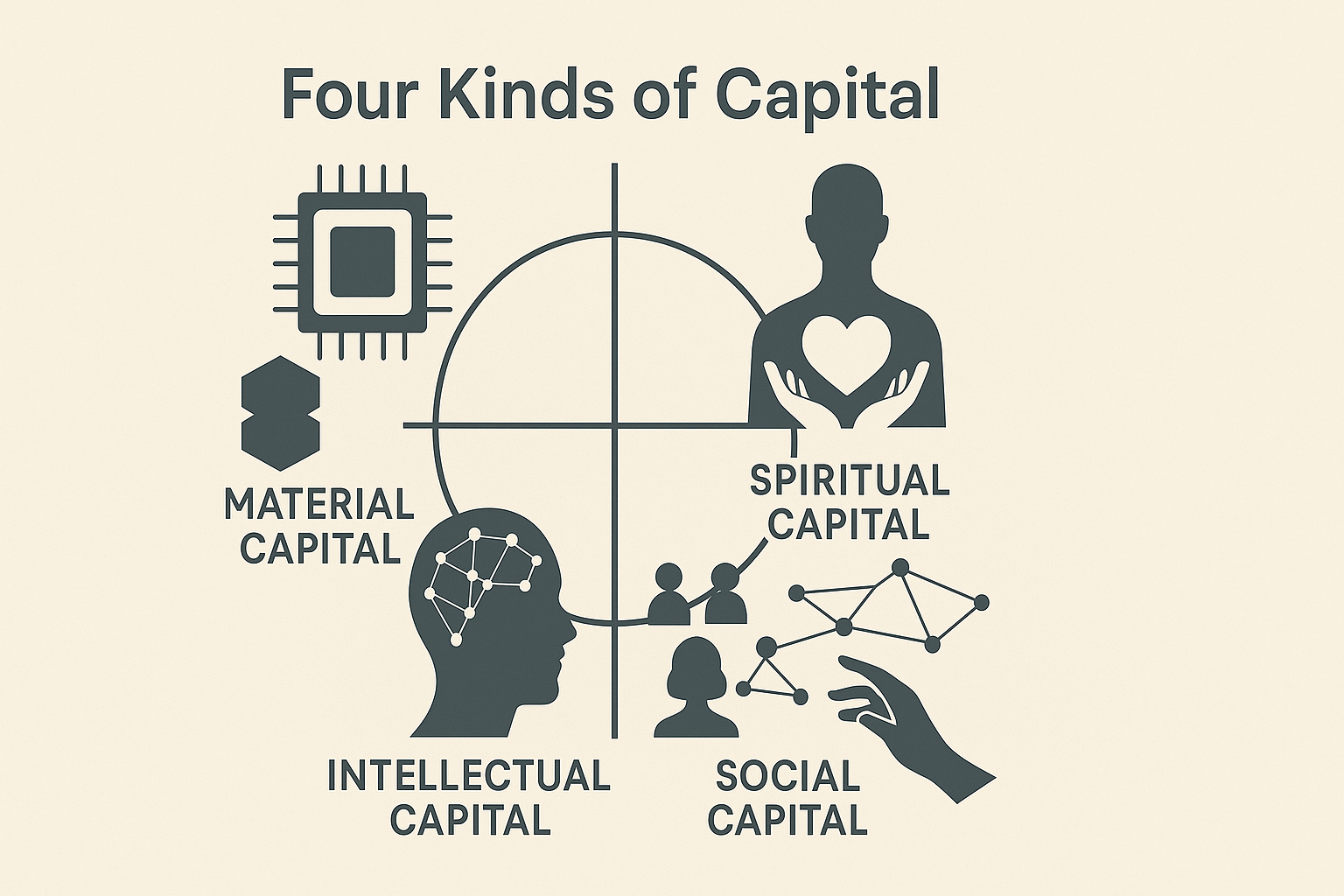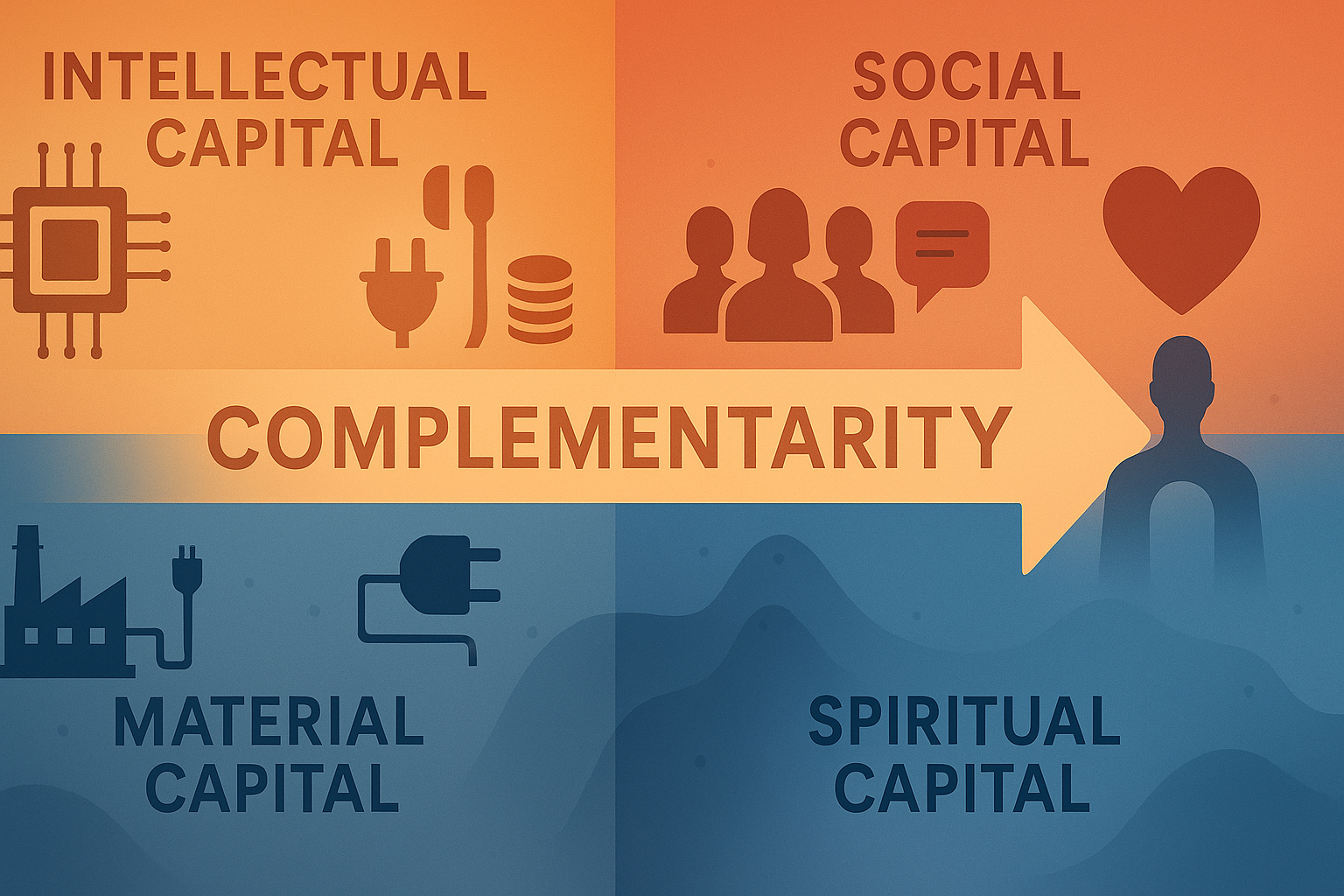We live in
capitalist societies and may think we know what “capital” means. Most
people point to money or physical goods. In fact, prosperity and
progress depend on four kinds of capital: material, intellectual,
social, and spiritual.
 In contemporary
social science, beyond material capital measured by money, intellectual
and social capital are widely used to explain modern economic and social
development. In recent years, spiritual capital has also drawn interest
from social scientists, business consultants, and religious workers.
In contemporary
social science, beyond material capital measured by money, intellectual
and social capital are widely used to explain modern economic and social
development. In recent years, spiritual capital has also drawn interest
from social scientists, business consultants, and religious workers.
Simply speaking:
-
Material
capital includes funds, equipment, infrastructure, and other durable
goods—assets typically measured by money.
-
Intellectual
capital refers to knowledge and skills used to generate wealth; it
is often proxied by education and intellectual property such as
copyrights and patents.
-
Social
capital reflects the value of networks—commonly evaluated by
internal trust and friendships, and by external reputation for an
individual or organization.
Spiritual
capital is newer in social science and can be difficult to define and
measure. For people who believe in God, it may be seen as the degree of
connectedness with God. For others, it may be commitments to noble life
purposes and moral standards. Everyone has unique spiritual assets; when
these values guide actions and habits, they become usable capital.
While each of
the four capitals has been studied separately, Dr. Alex Liu was among
the first to study their relationships. Based on measurements of the
four capitals and their impacts on life satisfaction, organizational
performance, and national development, Dr. Liu developed the 4Capital
theory and proposed the idea of an optimal 4Capital combination. The
theory states that a system’s 4Capital combination largely determines
these outcomes.
The theory also
warns that excessive emphasis on any single capital—money without trust,
knowledge without ethics, or community without resources—often creates
new problems. A balanced combination of material, intellectual, social,
and spiritual capital best supports human happiness, excellent
organizational performance, and social harmony.
 Why this
matters today: digital technology, data, and AI have expanded
intellectual capital; platforms and communities have reshaped social
capital; recent crises remind us of material foundations in finance,
energy, infrastructure, and even computing capacity; and questions of
meaning elevate spiritual capital. Success now depends on
complementarity—aligning resources, ideas, relationships, and
values—rather than maximizing one capital at the expense of the others.
Why this
matters today: digital technology, data, and AI have expanded
intellectual capital; platforms and communities have reshaped social
capital; recent crises remind us of material foundations in finance,
energy, infrastructure, and even computing capacity; and questions of
meaning elevate spiritual capital. Success now depends on
complementarity—aligning resources, ideas, relationships, and
values—rather than maximizing one capital at the expense of the others.
How this book
is organized:
-
Chapters
1–12 present concise theories and frameworks for each capital and
for their interactions, with brief, everyday examples for clarity
(no technical methods here).
-
The
Conclusion summarizes what balanced growth looks like.
-
Three
Special Sections follow: Extensions (levels, risks, sectors),
Applications: Measurement & Methods (practical instruments and
templates), and AI & Governance (how AI fits within the 4Capital
lens).
An optimal
4Capital combination is not a slogan; it is a practical way to align
resources, knowledge, trust, and purpose—so that people flourish,
organizations perform, and societies cohere.
BACK